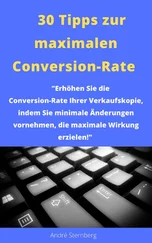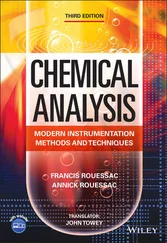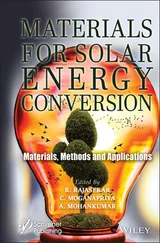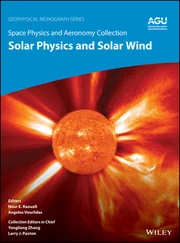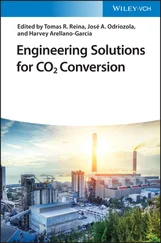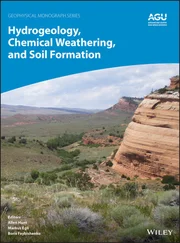1 Cover
2 Title Page Solar‐to‐Chemical Conversion Photocatalytic and Petrochemical Processes Edited by Hongqi Sun
3 Copyright Editor Prof. Hongqi Sun Edith Cowan University School of Engineering 270 Joondalup Drive 6027 Joondalup Australia All books published by Wiley‐VCH are carefully produced. Nevertheless, authors, editors, and publisher do not warrant the information contained in these books, including this book, to be free of errors. Readers are advised to keep in mind that statements, data, illustrations, procedural details or other items may inadvertently be inaccurate. Library of Congress Card No.: applied for British Library Cataloguing‐in‐Publication Data A catalogue record for this book is available from the British Library. Bibliographic information published by the Deutsche Nationalbibliothek The Deutsche Nationalbibliothek lists this publication in the Deutsche Nationalbibliografie; detailed bibliographic data are available on the Internet at < http://dnb.d-nb.de >. © 2021 WILEY‐VCH GmbH, Boschstr. 12, 69469 Weinheim, Germany All rights reserved (including those of translation into other languages). No part of this book may be reproduced in any form – by photoprinting, microfilm, or any other means – nor transmitted or translated into a machine language without written permission from the publishers. Registered names, trademarks, etc. used in this book, even when not specifically marked as such, are not to be considered unprotected by law. Print ISBN: 978‐3‐527‐34718‐6 ePDF ISBN: 978‐3‐527‐82509‐7 ePub ISBN: 978‐3‐527‐82508‐0 oBook ISBN: 978‐3‐527‐82507‐3 Printed on acid‐free paper 10 9 8 7 6 5 4 3 2 1
4 1 Introduction: A Delicate Collection of Advances in Solar‐to‐Chemical Conversions Hongqi Sun
5 2 Artificial Photosynthesis and Solar Fuels Jun Ke
2.1 Introduction of Solar Fuels 2.2 Photosynthesis 2.3 Principles of Photocatalysis 2.4 Products of Artificial Photosynthesis 2.5 Perspective Acknowledgments References
6 3 Natural and Artificial Photosynthesis Dimitrios A. Pantazis 3.1 Introduction 3.2 Overview of Natural Photosynthesis 3.3 Light Harvesting and Excitation Energy Transfer 3.4 Charge Separation and Electron Transfer 3.5 Water Oxidation 3.6 Carbon Fixation 3.7 Conclusions References
7 4 Photocatalytic Hydrogen Evolution Amanj Kheradmand, Yuxiang Zhu, Shengshen Gu and Yijiao Jiang 4.1 Introduction 4.2 Fundamentals of Photocatalytic H2 Evolution 4.3 Photocatalytic H2 Evolution Under UV Light 4.4 Photocatalytic H2 Evolution Under Visible Light 4.5 Photocatalytic H2 Evolution Under Near‐Infrared Light 4.6 Roles of Sacrificial Reagents and Reaction Pathways 4.7 Summary and Outlook References
8 5 Photoelectrochemical Hydrogen Evolution Zhiliang Wang and Lianzhou Wang 5.1 Background of Photoelectrocatalytic Water Splitting 5.2 Mechanism of Charge Separation and Transfer 5.3 Strategy for Improving Charge Transfer 5.4 Strategy for Improving Electron–Hole Separation 5.5 Surface Cocatalyst Design 5.6 Unbiased PEC Water Splitting 5.7 Conclusion and Perspective References
9 6 Photocatalytic Oxygen Evolution Huayang Zhang, Wenjie Tian and Shaobin Wang 6.1 Introduction 6.2 Homogeneous Photocatalytic Water Oxidation 6.3 Heterogeneous Photocatalytic Water Oxidation 6.4 Catalytic Active Site–Catalysis Correlation in LD Semiconductors 6.5 Conclusions and Perspectives References
10 7 Photoelectrochemical Oxygen Evolution Fumiaki Amano 7.1 Introduction 7.2 Honda–Fujishima Effect 7.3 Factors Affecting the Photoanodic Current 7.4 Electrode Potentials at Different pH 7.5 Evaluation of PEC Performance 7.6 Flat Band Potential and Photocurrent Onset Potential 7.7 Selection of Materials 7.8 Enhancement of PEC Properties 7.9 PEC Device for Water Splitting 7.10 Conclusions and Outlook References
11 8 Photocatalytic and Photoelectrochemical Overall Water Splitting Nur Aqlili Riana Che Mohamad, Filipe Marques Mota and Dong Ha Kim 8.1 Introduction 8.2 Photocatalytic Overall Water Splitting 8.3 Photoelectrochemical Overall Water Splitting 8.4 Concluding Remarks and Outlook Acknowledgments References
12 9 Photocatalytic CO 2Reduction Maochang Liu, Guijun Chen, Boya Min, Jinwen Shi, Yubin Chen and Qibin Liu 9.1 Introduction 9.2 Principle of Photocatalytic Reduction of CO2 9.3 Energy and Mass Transfers in Photocatalytic Reduction of CO2 9.4 Conclusions Acknowledgments References
13 10 Photoelectrochemical CO 2Reduction Zhongxue Yang, Hui Ning, Qingshan Zhao, Hongqi Sun and Mingbo Wu 10.1 Introduction 10.2 PEC CO2 Reduction Principles 10.3 Application of Solar‐to‐Chemical Energy Conversion in PEC CO2 Reduction 10.4 Other Configurations for PEC CO2 Reduction 10.5 Conclusion and Outlook Acknowledgments Conflict of Interest References
14 11 Photocatalytic and Photoelectrochemical Nitrogen Fixation Lei Shi and Hongqi Sun 11.1 Introduction 11.2 Fundamental Principles and Present Challenges 11.3 Strategies for Catalyst Design and Fabrication 11.4 Conclusions and Outlook References
15 12 Photocatalytic Production of Hydrogen Peroxide Using MOF Materials Xiaolang Chen, Yasutaka Kuwahara, Kohsuke Mori and Hiromi Yamashita 12.1 Introduction 12.2 Photocatalytic H2O2 Production Through Selective Two‐Electron Reduction of O2 Utilizing NiO/MIL‐125‐NH2 12.3 Two‐Phase System Utilizing Linker‐Alkylated Hydrophobic MIL‐125‐NH2 for Photocatalytic H2O2 Production 12.4 Ti Cluster‐Alkylated Hydrophobic MIL‐125‐NH2 for Photocatalytic H2O2 Production in Two‐Phase System 12.5 Conclusion and Outlooks Reference
16 13 Photocatalytic and Photoelectrochemical Reforming of Methane Jinqiang Zhang and Hongqi Sun 13.1 Introduction 13.2 Photo‐Mediated Processes 13.3 Differences Between Photo‐Assisted Catalysis and Thermocatalysis 13.4 Reactions of Methane Conversion via Photo‐Assisted Catalysis 13.5 Conclusions and Perspectives Acknowledgment References
17 14 Photocatalytic and Photoelectrochemical Reforming of Biomass Xiaoqing Liu, Wei Wei and Bing-Jie Ni 14.1 Introduction 14.2 Fundamentals of Photocatalytic and Photoelectrochemical Processes 14.3 Photocatalytic Reforming of Biomass 14.4 Photoelectrochemical Reforming of Biomass 14.5 Conclusion Remarks and Perspectives Acknowledgments References
18 15 Reactors, Fundamentals, and Engineering Aspects for Photocatalytic and Photoelectrochemical Systems Boon-Junn Ng, Xin Ying Kong, Yi-Hao Chew, Yee Wen Teh and Siang-Piao Chai 15.1 Fundamental Mechanisms of Photocatalytic and PEC Processes 15.2 Reactor Design and Configuration 15.3 Engineering Aspects of Photocatalytic and PEC Processes 15.4 Conclusions and Outlook Acknowledgments List of Abbreviations References
19 16 Prospects of Solar Fuels Hongqi Sun Hongqi Sun
20 Index
21 End User License Agreement
1 Chapter 5Table 5.1 The diffusion length and light penetration of some typical semiconductors. Source: From Xiao et al. [22]. © 2018 John Wiley & Sons.Table 5.2 The reported unbiased PEC water splitting system based on photoanode–photocathode dual‐photoelectrode system.
2 Chapter 6Table 6.1 Homogeneous catalysts for photocatalytic water oxidation.Table 6.2 Heterogeneous catalysts for photocatalytic water oxidation.
3 Chapter 9Table 9.1 Reduction potentials of CO 2, H 2CO 3, and CO 3 2−. Source: Li et al. [12]. © 2014, Springer Nature.
4 Chapter 10Table 10.1 The thermodynamic potentials vs . the normal hydrogen electrode at pH = 7 for various CO 2reduction products and water splitting. Source: Chang et al. [15]. © 2016, Royal Society of Chemistry.Table 10.2 Some recent advances reported in the development of semiconductors and setups for PEC CO 2reduction.
Читать дальше
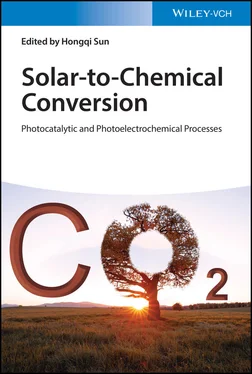

![Евгений Матерёв - Музеи… или вдохновляющая музыка The Chemical Brothers [litres самиздат]](/books/437288/evgenij-materev-muzei-ili-vdohnovlyayuchaya-muzyka-th-thumb.webp)

